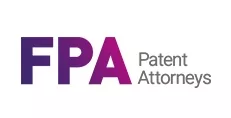We continue in our series of snap-shots of changes to US patent law as a result of The America Invents Act, signed into law by President Obama on 16 September 2011. This act will bring about significant changes affecting the entitlement of an inventor to a patent and the scope of the available prior art.
Summary of changes
The proposed changes include:
- a first-inventor-to-file system replaces the old first-to-invent system
- the prior art base for novelty and inventive step has been expanded
- the grace period has been restricted from prior disclosures made by anyone to disclosures which derive from the inventor(s)
- Australian applicants can avail themselves of the US grace period by filing an Australian application
These changes are yet to come into effect (see below).
Implications of these changes
- Moving to a first-inventor-to-file system
-
The implications of moving to a first-to-file system have been discussed in our earlier article US Patent Reform - First-To-File.
- Expanded prior art base
-
The prior art base has been broadened to include the use or sale of the invention in countries outside of the US. Previously, only a use or sale in the US was novelty destroying.
This means that the sale or use of the invention in Australia before the first filing of a patent application would destroy the novelty of the claims of a US patent. This was not the case previously.
For applicants, this imposes a higher validity threshold. For competitors of patent holders, this provides an additional ground of attack against a granted patent.
- Grace period Previously, the grace period applied to
disclosures (by anyone) made within the year preceding the filing
of the US application. The new grace period applies to disclosures
made 1 year or less before the "effective filing date" of
an application, provided the disclosure was made by:
- the inventor
- a co-inventor or
- another who obtained the information directly or indirectly from the inventor or co-inventor
These changes provide significant advantages to Australian businesses that are filing in the US. Previously, the grace period only extended for the 12 month period prior to the US application.
The new grace period is based on the effective filing date. For an Australian applicant, the effective filing date is essentially the filing date of your first application in Australia. Therefore, the grace period extends for a period of one year prior to the filing of, for example, your Australian provisional application.
Another interesting feature of the grace period is that any information that is disclosed by anyone after the inventor has made an initial prior disclosure can be removed from the prior art base. This means that you do not have to worry about third party prior art anticipating your claims, provided you have made an earlier disclosure. That is, if you can show that the inventor has disclosed the information previously, before a relevant piece of prior art, then that prior art can no longer be considered for the purpose of novelty.
When is this happening?
The new provisions come into effect for US applications with an effective filing date on or after 16 March 2013. Generally, the effective filing date equates with the priority date. This means that the old law will still apply to US and international applications which rely on an Australian priority application filed before 16 March 2013. So the changes may not be felt by Australian businesses filing in the US until after March 2014.
The content of this article is intended to provide a general guide to the subject matter. Specialist advice should be sought about your specific circumstances.


